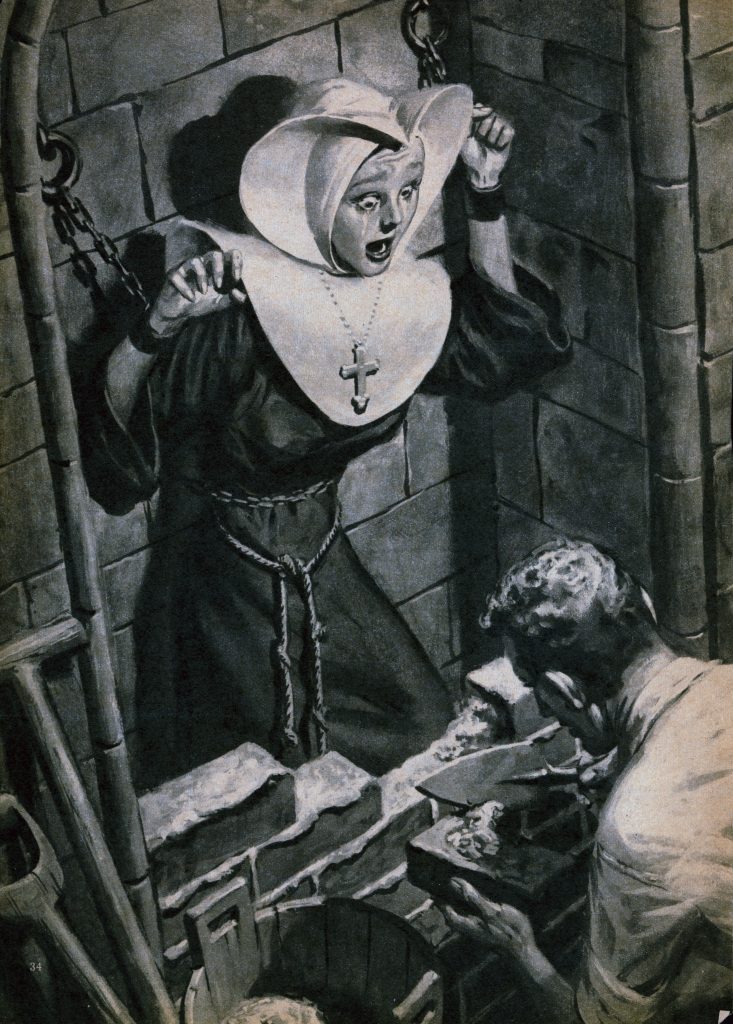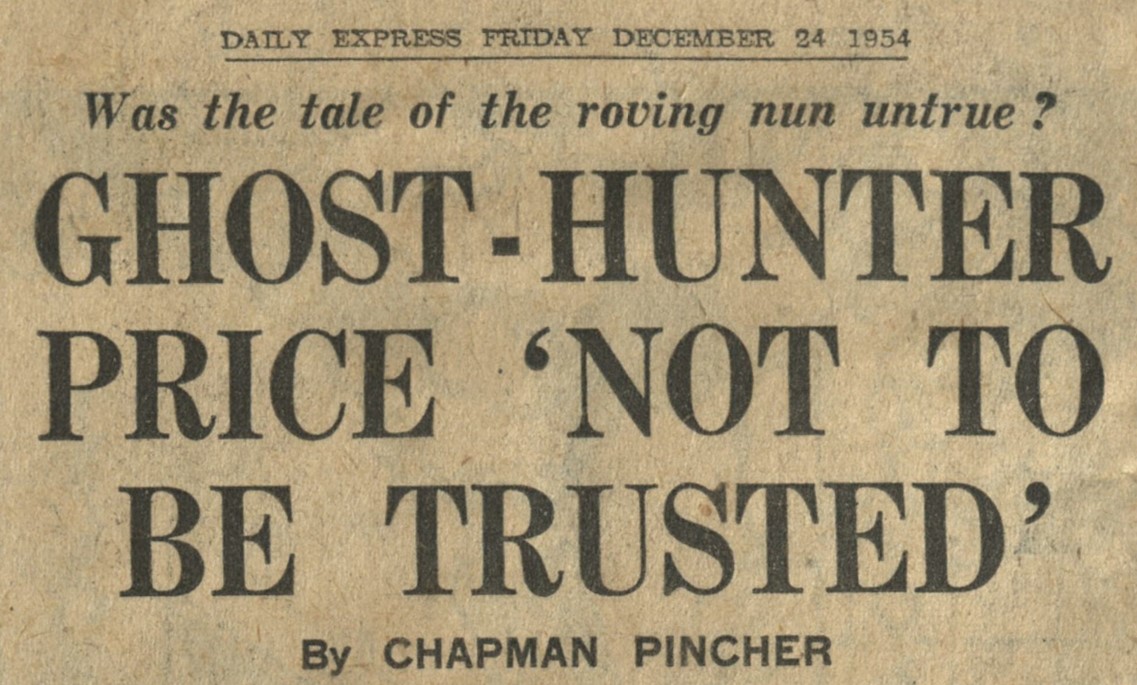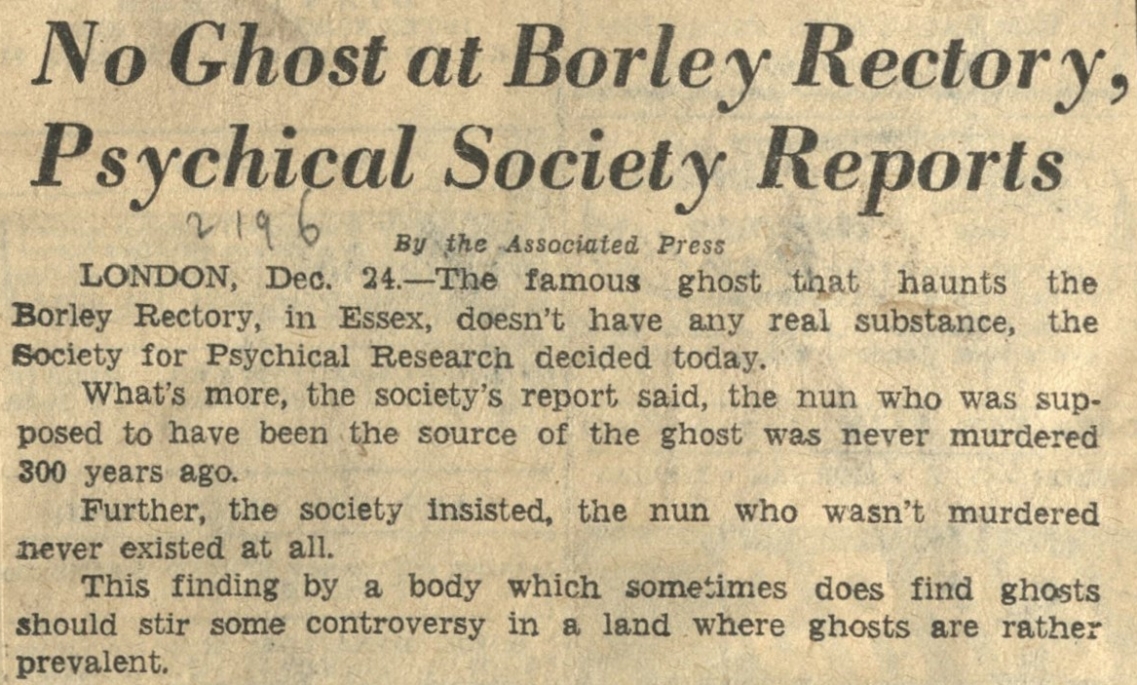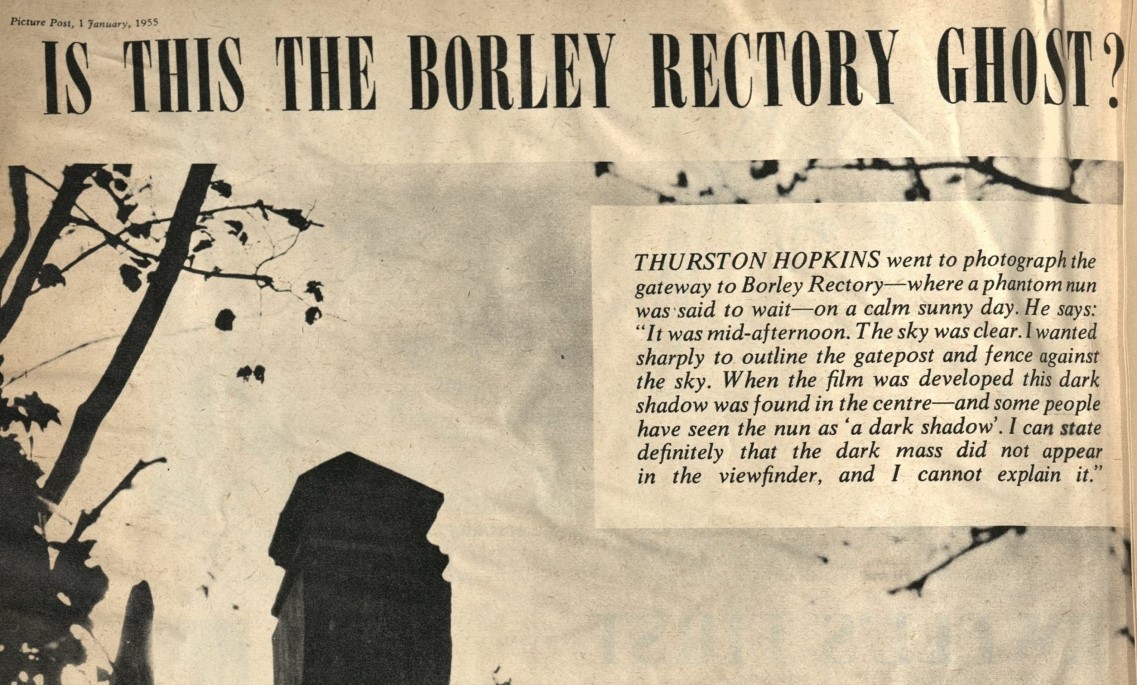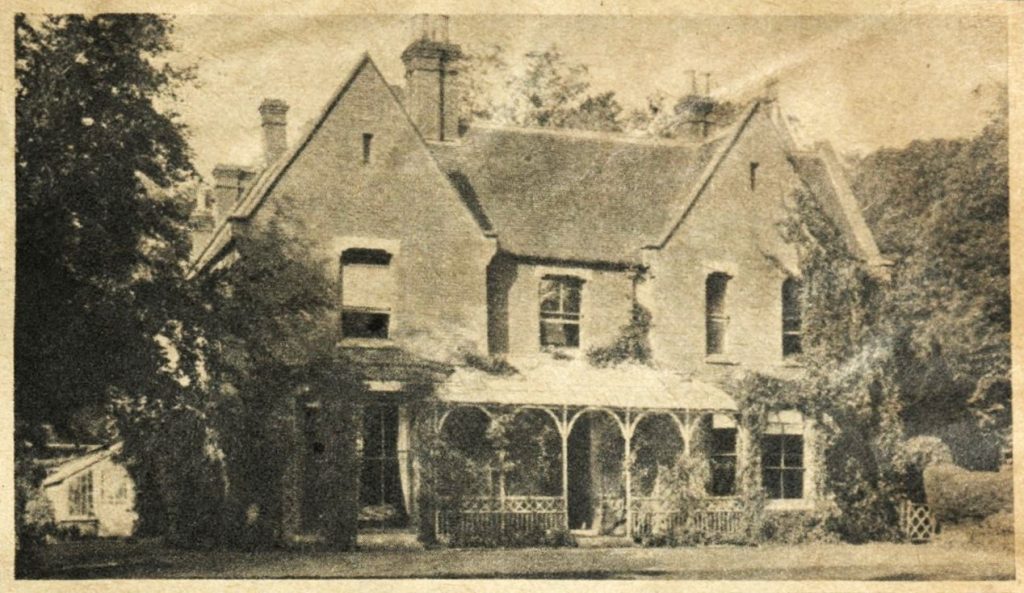
The Eileen J. Garrett Parapsychology Foundation Collection is home to a wide array of materials related to the Borley Rectory, including photographs, scrapbooks, newspaper articles, and personal correspondence.
Borley Rectory was built in 1862 to house the rector of the Borley parish in Essex, England. Investigations by paranormal researcher Harry Price gave Borley the nickname, “the most haunted house in England.” The building was completely destroyed by a fire in 1944, which only sparked greater interest in the story.
Legends and Reported Phenomena
One legend connected to Borley is that of a nun who violated her vows by falling in love with a monk. As punishment for her transgression, she was sealed up alive within the walls of the Rectory and began to haunt the building.
Another is of a French nun named Marie Lairre, who similarly broke her vows by falling in love, this time with a member of the Waldegrave family. She also met a tragic end as her lover murdered and buried her at the site where Borley Rectory would be built. This collection features a first draft of “Most Haunted House” by Upton Sinclair, an unpublished screenplay inspired by this story.
Eyewitness reports describe visions of apparitions, moving objects, mysterious knocking sounds, and other purportedly supernatural events.
Price’s Investigations
Though he was a prolific paranormal investigator who covered a wide range of phenomena, Harry Price’s name has become eternally linked to the story of Borley Rectory, for better or worse. After it had become vacant, Price rented out the Rectory for a year and brought in a team of investigators to interview eyewitnesses and conduct experiments. His work brought Borley international publicity and served as the primary evidence behind the building’s rumors of ghostly activity.
Throughout his life, Price wrote extensively on the topic and maintained that the haunting was authentic.
The Planchette Scripts
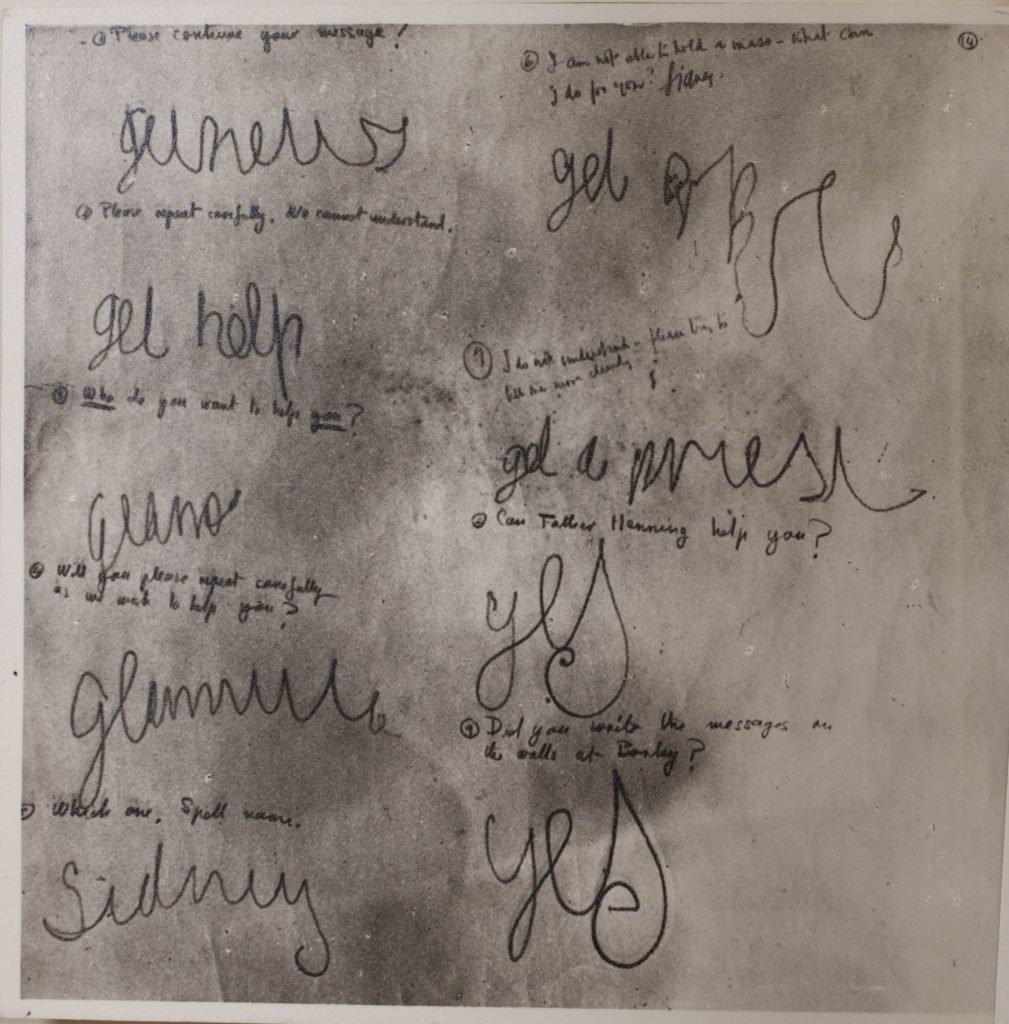
Roger H. Glanville, the son of a member of Price’s team, held a series of séances between October 1937 and March 1938 to make contact with Borley’s ghosts. The proceedings of these séances were recorded in transcripts dubbed “The Planchette Scripts,” compiled by author Trevor H. Hall. Other participants included the Rev. A.C. Henning and Mark Kerr-Pearse, another of Price’s observers.
Click the image for more information on planchette writing
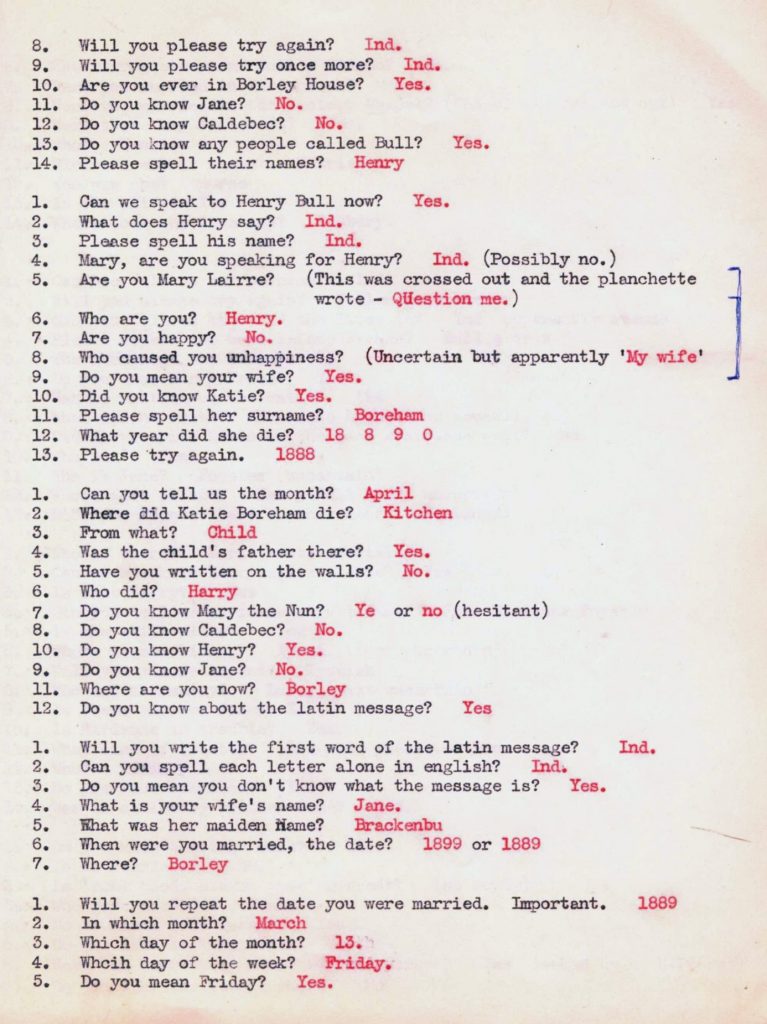
According to the transcripts, the participants made contact with spirits connected to Borley’s history and legends. Both Marie Lairre and Waldegrave spoke and revealed greater details about Marie’s murder.
During the final séance, a spirit called “Sunex Amures” proclaimed that someone would set fire to the Rectory that night at 9:00. While this was not true, the Rectory did catch on fire in February of the following year. Some used this as evidence to prove the authenticity of the ghost stories.
A full PDF of the transcripts is available here.
Skepticism and Controversy
Not everyone was convinced by Price’s evidence. On January 26, 1956, the Society for Psychical Research (SPR) published a report discrediting Price and his investigations of Borley. He was accused of exaggerating or even deliberately altering his evidence to push a specific narrative. No concrete proof of the sealed-up nun or the murder of Marie Lairre was ever found. However, Price still had supporters in the parapsychological community. Fellow investigator and author, Peter Underwood, called the SPR’s report “a biased and uncharitable attack not consistent with the evidence.”
Some people associated with the Rectory have admitted to creating the hoax. In 2000, Louis Mayerling, who had lived at Borley until it was destroyed, claimed to have been enlisted by the rector’s family to wear a costume and wander the grounds in the evening to perpetuate the ghostly rumors. He also explained that much of the other “phenomena” was perpetrated by servants and children with access to secret doors and passageways throughout the house. Additionally, the reported knocking sounds may have been caused by a noisy water heater.
Below are a few selected clippings from the “Borley 48” scrapbook in the Eileen J. Garrett Parapsychology Foundation Collection. Click on the images to read more

